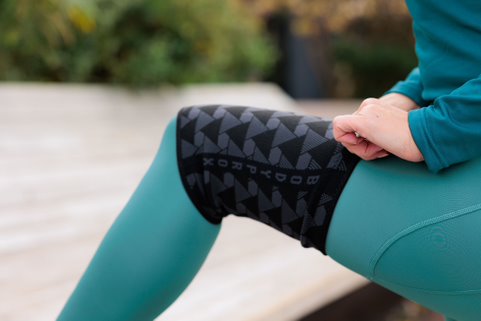
Maximizing Performance: The Role of Compression Gear in CrossFit Training
Share
Increased strength, endurance, and improved body composition are just some of the many benefits of CrossFit Training. It is known for being a high-intensity interval training that can give you simultaneous body improvements in just as little as 12 weeks. And if you are an athlete or sprinter, engaging in two to three CrossFit Training a week adds a great extent of running efficiency. Now, before you appoint this kind of high-intensity workout to your routine, compression gear for CrossFit is essential to make sure that you perform well and that you can execute any drill accurately.
How Compression Gear Can Improve CrossFit Performance?
Compression gear for CrossFit allows the blood to flow quickly around the compressed area. This speeds up the lactic acid from your muscles which in turn helps you recover faster and make sure that you have less soreness post-workout. With that said, your CrossFit performance will improve more as well as reduce your heart rate during high-intensity activities such as running and powerlifting.
Different Types of Compression Gear for CrossFit
Compression gear for CrossFit helps athletic performance by applying pressure to the compressed area. It also improves the oxygenation of the muscle tissue which speeds up recoveries from minimal injuries. Here are some different types of compression gear for CrossFit training:
1. Thigh Compression Sleeves
Thigh Compression sleeves are known for being a CrossFit recovery gear that is usually used for applying pressing weight to the soft tissue injury which will improve the blood flow around the area. This results in an enhanced fresh blood supply that can provide the necessary nutrients the injured tissues need to heal.
2. Ankle Support Brace with Compression Strap
Ankle Support Brace equipped with compression straps is a compression tight for CrossFit training which serves as an external support that can limit your motions during high-intensity routines. An ankle support brace is recommended for athletes or individuals with injuries to avoid other damaging effects on the ankle and serves as the body’s early warning detection system whenever a joint is augmented.
3. Elbow Compression Sleeves with Support Strap
CrossFit compression sleeves help to reduce inflammation and swelling in the elbow joint while the added support strap helps to stabilize it and prevent discomfort and injuries. A lot of athletes or those who perform high-intensity training use elbow compression sleeves with a support strap to avoid tennis elbow. The latter is a condition known as lateral epicondylitis which occurs when you overuse the muscles on your forearm near the elbow joint.
4. Knee Compression Sleeves
Reducing inflammation, prevention of injuries, improved proprioception, and being aware of where your body takes you are just some of the many uses of knee compression sleeves. This CrossFit recovery gear also provides support and stability to your knees when doing intense physical activities.
Benefits of Wearing Compression Gear During CrossFit Training
Wearing compression gear during CrossFit training can help improve blood circulation, reduce muscle soreness, and increase stability and mobility. It also helps athletes maintain their form during high-intensity workouts by providing support for the muscles and joints.
All these benefits make wearing compression gear for CrossFit an ideal choice for any serious athlete or individuals looking to maximize their performance and stay safe while training.